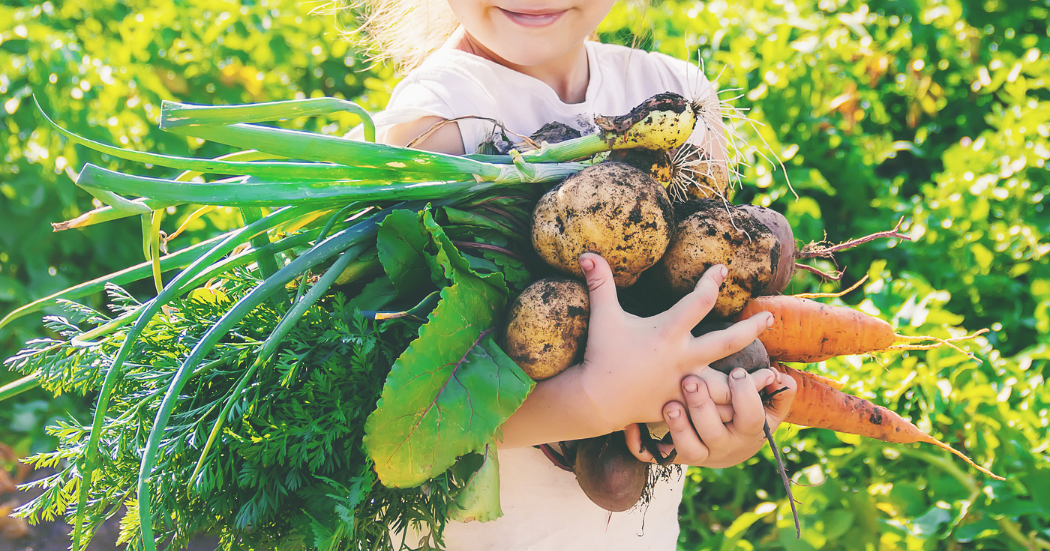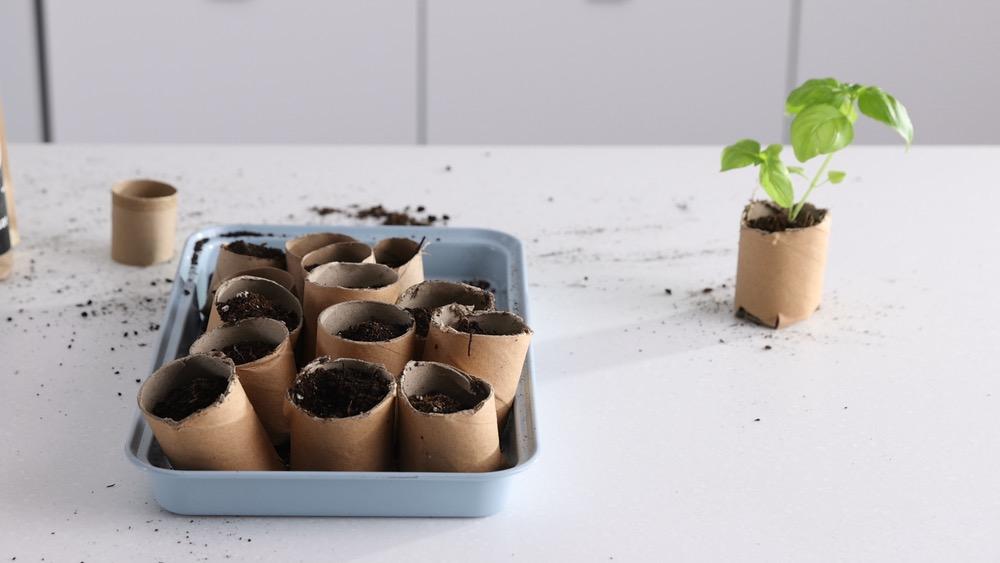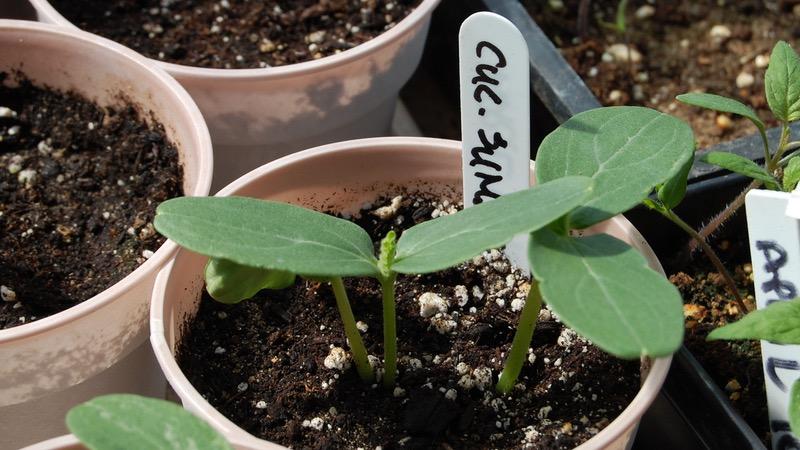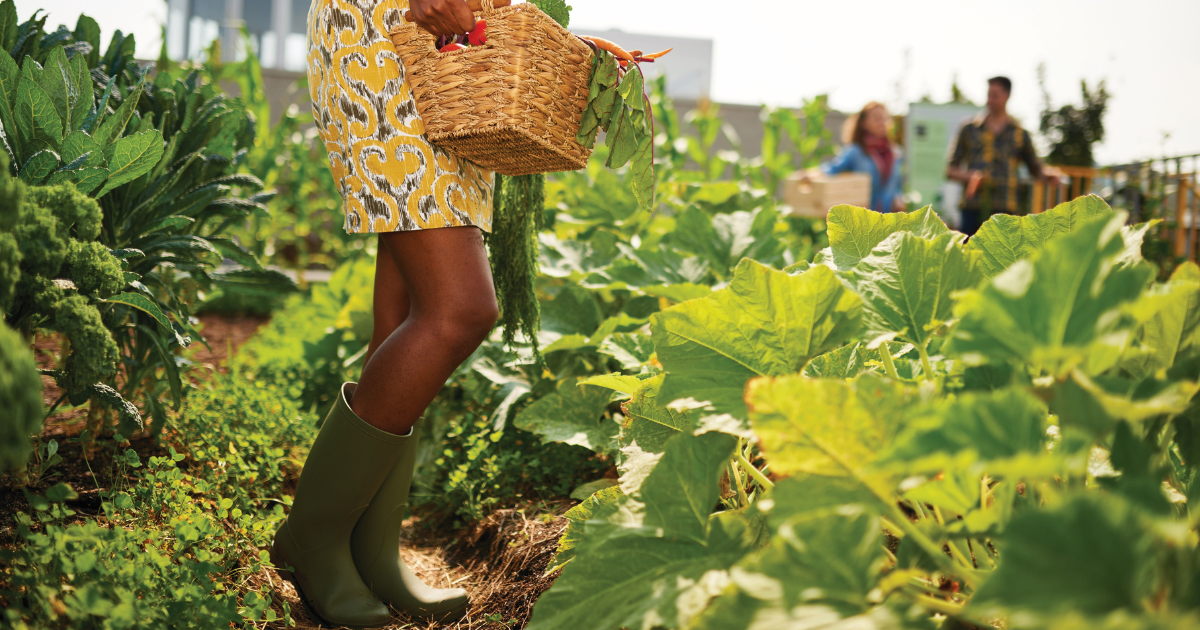There are many opportunities to diversify our neighbourhoods using the underused and marginal green spaces in our communities, such as yards, medians and parks. Fresh fruits, berries, herbs and more can be just outside our doorstep if we follow a few practical design steps. Spaces as small as 25 square feet (5 by 5 feet) can be transformed into diverse, delicious and beautiful abundance with an edible-ecosystem design.
Edible-ecosystem design uses companionship planting to improve yield and plant health and to maximize space. Companion plants work well together because they share space, time and energy, and naturally improve the overall system’s health and yield. By observing natural systems like woodlands and prairies, gardeners can inform their garden design and choose companion plants appropriately. Look at a wild ecosystem outside your door or in adjacent landscapes—what do you see?
Of primary importance is the observation that ecosystems are biodiverse, so we must choose different food plants for our guild and not monoculture planting. We are mimicking the natural phenomenon of diversity with our garden design when we choose three or more different types of plants to grow together, perhaps a pear tree, plum tree and mulberry bush.

Next, ecosystems are layered with plants of different forms (tree, bush, ground covers), so we choose plants that share space better because they have different shapes and sizes, roots, leaves, stems and so on. Perhaps we choose a pear tree, grape vine and thyme. Now we have a diverse and layered garden spot.
Lastly, ecosystems have plants that serve different functions for the overall system. When we choose plants that complement one another, we gain more benefit for the whole system. Examples include nitrogen fixers that help fertilize the garden, fast-growing nurse plants that will protect shade-loving, slow-growing plants, or pollinator plants that will attract beneficial insects to improve fruit set. Consider adding nitrogen-fixing clover or fast-growing birch trees or bee balm (bergamot) to your design. Now we have a diverse, layered and functional landscape.
Our garden spot can include these three ecosystem design elements to create a good companionship guild. But before we plant our garden spot, we must first create a raised garden bed from scratch.

Building a bed from scratch involves turning over the sod and raising up a mound (8 to 12 inches above the lawn). Raised beds are a standard practice for many commercial market gardeners, but the benefits should not be lost on home gardens and landscapes. Raised beds offer many advantages over flat-ground growing, namely, improved drainage, better spring soil warming, reduced compaction and overall improvement in the soil-life habitat. Soil micro-organisms are responsible for the improved capture, storage and cycling of water and nutrients, and their habitat requires organic matter and loose uncompacted soil aggregates.
Next, you will want to divide your garden spot into a grid, using a rake with cut-off pieces of hose. “Cross-raking” marks a perfect 12-inch grid for a planting layout. Each intersecting line is a planting spot for a tree, shrub, bush, herb or ground cover. These are the layers of your edible ecosystem.
Choosing the correct mix of food plants for this garden spot requires making decisions about your site’s sun, shade and moisture conditions. Generally speaking, fruiting trees prefer good drainage (we have made a raised bed, so this should be fine) and full sun (observe your site over the growing season and see if it is mostly in sun or shade). If you have a full-sun site, then you can go ahead and design a guild. Two popular guild types are fruit forests and berry meadows.
Remember, a garden guild is a companionship of several plants that share space and partition nutrients, water and sunlight. As such, they often occupy different ecological niches within the garden spot’s 25-square-foot space. Trees, bushes and herbs work well together. Ground covers creep, and berry bushes reach upward. Fruit trees love the sun, and shade-tolerant mint won’t mind creeping around its trunk.
Each of these guilds mimics a natural ecosystem and focuses the design on key edible or useful plants, or both. A fruit forest will have a fruit tree in the centre of the raised bed, with a complement of plants around it. A berry meadow will have raspberries or currants central to the design, with ground cover as companions. Remember that those sun-loving companions should go on the sunny side of the guild (see photo directionalTK).

For a micro fruit forest, plant the centre with a fruit tree such as pear or cherry. In colder climates (zones 3 to 6), a scab-free apple, hardy pear or semi-sweet cherry shrub makes a good choice. The fruit tree or shrub will grow up and fill the vertical space with its canopy while leaving room for companion plants underneath, especially to complement the tree as it grows. Good companions include pollinator plants like bee balm or echinacea. You can also plant a grape along its stem to grow up the tree as it matures—this works best in full-sun sites and with a vigorous tree species. For sunny sites, ground covers such as asparagus and strawberries can be planted around the tree. As the site becomes shadier and the tree matures, these ground covers will creep outward, and you can build new beds adjacent them, to accept their runners and crowns that propagate new plants. You can also infill with more shade-tolerant ground cover such as lemon balm and chives.
A berry meadow can be designed with your berry plants of choice planted along the middle row of your garden spot. Plant them 2 feet apart in the centre row, oriented east to west. For the companion plants, the south side of the guild can have a row of strawberry, planted 6 feet apart, which will spread to fill in the south side and creep toward your path. A nice tidy mulch edge between your garden spot and your lawn will provide a good border for walking and maintenance. Good companion plants for raspberries include ground covers and herbs like thyme, chives, strawberries and dwarf white clover.
Your garden spot’s success is also determined by a quality raised bed and the healthy, site-suitable plants you select. Get a soil test done to understand the texture, fertility and pH of your local soil. Look up a regional soil lab and ask for the protocol and cost for a mail-order analysis of your soil. Also, in addition to understanding your yard’s sun and shade, you should research your local climate and hardiness zone (look it up online, as there are hardiness maps for most regions).
With this information and a visit to a knowledgeable small-scale nursery, you will be able to make good decisions about what plants to choose for your site, what soil amendments to add to improve your garden bed, and how to care for your plants in the future. Simple guild design plus local knowledge and research equals planting an abundant, diverse garden! What is more, with this garden spot planted, we are on track to improve community well-being and societal resilience. Every garden spot makes a contribution to the mighty ocean of edible ecological change.
Zach Loeks is the author of The Edible Ecosystem Solution: Growing Biodiversity in Your Backyard and Beyond (New Society Publishers, Fall 2020).
Zach is an educator, designer and grower who specializes in Edible Ecosystem Design. He consults widely with homes, farms, colleges, schools and municipalities across Canada and the United States, and through many biomes from Guatemala and South Africa to the Yukon and Mongolia.
Zach manages an award-winning farm with diversified food forest products, heirloom garlic, and a hardy tree nursery. His innovations have won three provincial awards and are featured in his first book: The Permaculture Market Garden.
Zach is the director of the Ecosystem Solution Institute, which is dedicated to the education, propagation and inspiration of ecosystem solutions for land use transition. The Institute oversees pathbreaking education sites, including an edible botanical garden near Ottawa, Ontario, and a suburban food forest in Winnipeg, Manitoba. Zach is passionate about how small actions - strategically linked - can make big change. His inspiring and empowering vision is presented in his latest book: The Edible Ecosystem Solution.











